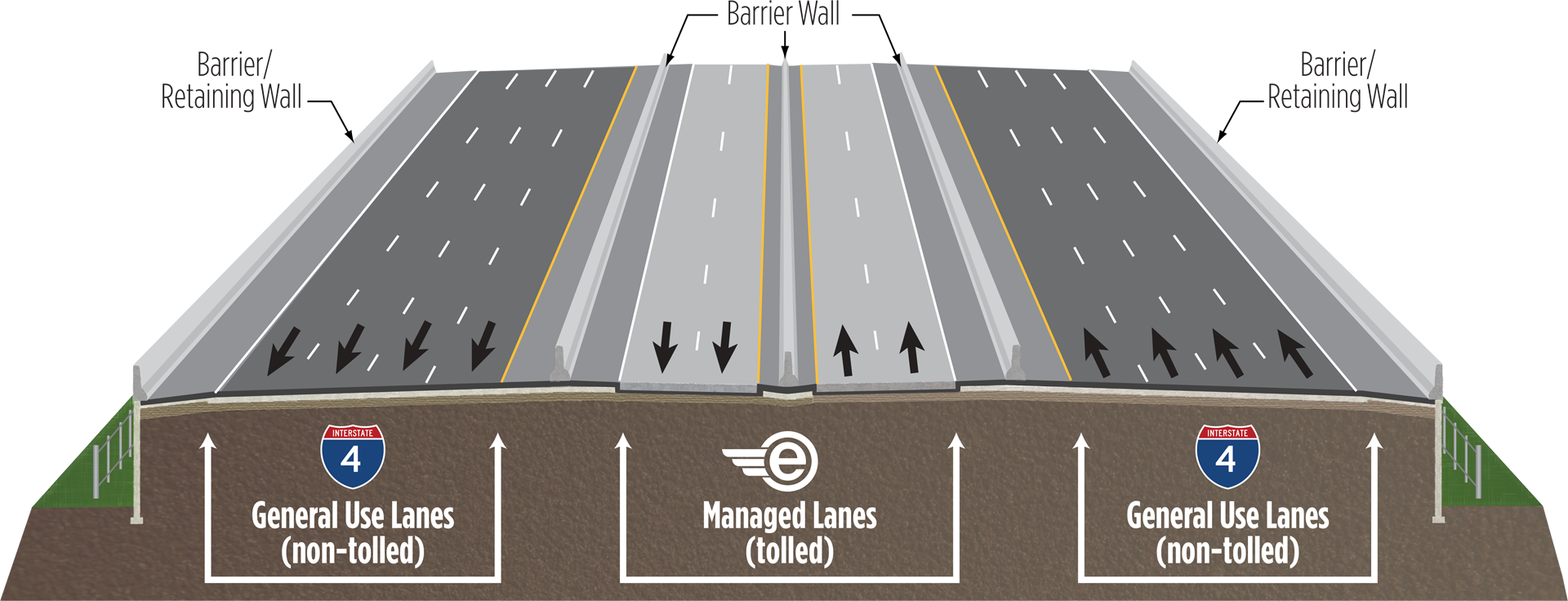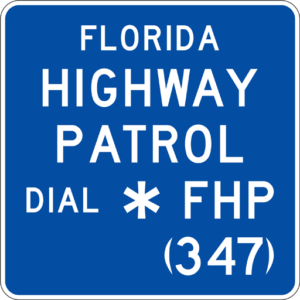About
Quick links: What Are Managed Lanes? | Benefits | Safety | History | Future | Reports
What Are Managed Lanes?
The Florida Department of Transportation (FDOT) is providing motorists choices with managed lane options on some of its most heavily traveled highways. Managed lanes are highway lanes designed to address congestion and have been successfully implemented in other areas around Florida, throughout the United States, and around the world. Managed lanes can take on many forms including reversible lanes, high-occupancy vehicle (HOV) lanes, and express lanes. FDOT’s managed lanes approach on Interstate 4 (I-4) in Orange and Seminole counties is known locally as I-4 Express. I-4 Express was constructed as part of the I-4 Ultimate project, a 21-mile reconstruction of I-4. Motorists have the option to enter the lanes, two in each direction, via limited access points to more reliably get where they need to go.
Benefits
- Less Stress – I-4 Express is designed to keep traffic moving, which provides more reliable travel times.
- Avoid Congestion – I-4 Express can help you skip congested areas when traveling through the busiest interstate corridor in Central Florida.
- No Stopping – Tolls are collected electronically with an active and properly mounted SunPass or any other Florida-accepted transponder.
Safety
The moments after a traffic incident can mean the difference between a minor inconvenience and a major road closure. That’s why FDOT is taking measures to anticipate and address all types of events to keep motorists safe and traffic moving along I-4 Express.
- I-4 Express allows two-axle vehicles only. Large trucks and trailers must remain in the general use lanes. This can help reduce motorists’ anxiety and shorten incident clearance time when incidents happen.
- Wider shoulders on the right give motorists room to pull over when they are experiencing mechanical issues. This space allows traffic to continue moving while the driver calls 911 in an emergency or *347 for non-emergency help.
- Road Rangers, a fleet of roadside-assistance trucks and their drivers, respond to motorists in need. Free of charge, they can change a flat tire, provide a gallon of gas, make minor mechanical repairs, and tow a disabled vehicle to a safe spot out of the flow of traffic. These highway heroes patrol I-4 Express around the clock and are just a phone call away at *347 (*FHP).
- When crashes occur, I-4 Express features access points approximately every 2 miles, allowing emergency vehicles to quickly respond to and safely clear incidents. Entry points may be the same ramps drivers use between I-4 Express and the general use lanes or special Emergency Access Gates (EAGs). The retractable EAGs are built into the concrete barrier wall separating I-4 Express and the general use lanes. The gates can only be opened by emergency responders or staff at the Regional Transportation Management Center (RTMC).
- Fire suppression systems at key locations throughout I-4 Express help emergency responders rapidly respond to fires. These systems aid in conveying lifesaving resources where physical challenges exist such as high-level bridges at the I-4 and State Road (S.R.) 408 interchange.
- FDOT reminds motorists to do their part and reduce their risk of being involved in a crash. Follow the posted speed limit while traveling on I-4 and I-4 Express, wear a seat belt, avoid distractions, and give emergency responders and stopped vehicles ample space.


